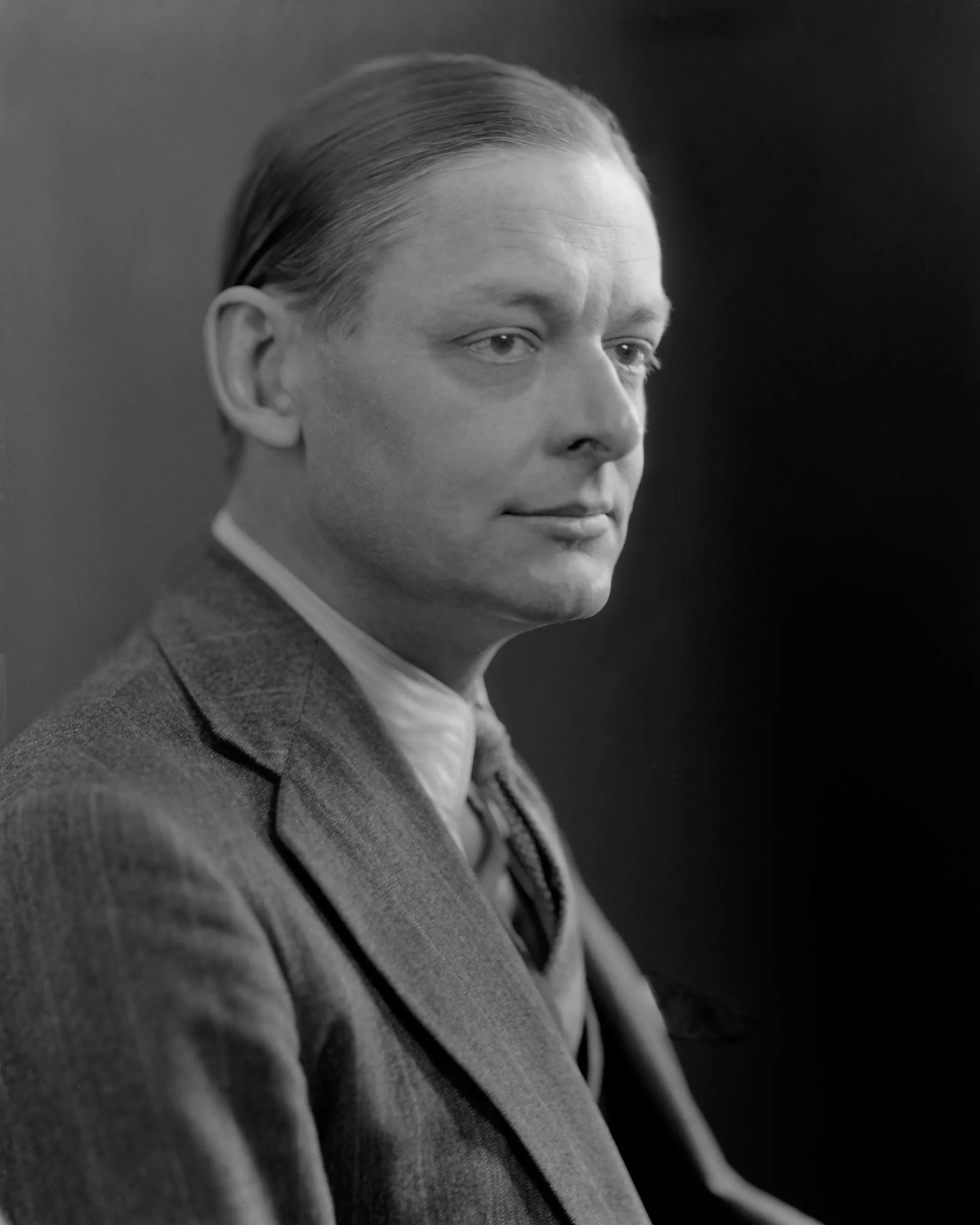Personal Information
Name : Khushi R. Rathod
Batch : 2023-25
Roll No :16
Enrollment Number : 5108230039
Semester : 2
E- mail : khushirathod1863@gmail.com
Assignment Details
Paper No : 106
Paper Code :22399
Paper Name : The Twentieth Century Literature : 1900 to World War II
Topic : Allusions in T. S. Eliot’s ‘The Waste Land’
Submitted to : Smt.S.B.Gardi, Department of English,MKBU
Que : Allusions in T. S. Eliot’s ‘The Waste Land’
Ans.
Table of Contents :
Introduction
T.S. Eliot
The Waste Land
Allusions in T. S. Eliot’s ‘The Waste Land’
The Burial of the Dead
The Game of Chess
The Fire Sermon
Death by Water
What the Thunder Said
Conclusion
Reference
Introduction :-
"The Waste Land," published in 1922, is famous for being both successful and complex. It's seen as a bit difficult because T.S. Eliot packed it with lots of references to other works of literature. He used over a hundred of these references, mentioning about 30 different writers. But even though it might seem like a lot, Eliot's way of using these references actually works really well. He's able to get his message across effectively by using them.
The poem itself feels like a jumble of different scenes, almost like scenes in a movie. But even though it might seem chaotic, it's actually very carefully structured. It's like a big puzzle where everything fits together just right. And even though it was published only a few years after World War I ended, it's not really about the war itself. Instead, it's about how people were feeling after the war, like there was something missing in their lives, something hollow about their morals and spirituality.
T.S. Eliot :-

T.S. Eliot was a really famous writer who did a lot of different things. He was born in 1888 in St. Louis, Missouri, and went to school at places like Harvard and Oxford. He even won the Nobel Prize for Literature in 1948.
Eliot was also known for being a critic, which means he wrote about other people's writing, and he worked as an editor and publisher too. He married twice in his life, and his first marriage influenced his famous poem "The Waste Land." After his first wife passed away, he married again to someone much younger than him.
He had three main phases in his writing career. The first was when he was studying in Boston and Paris and wrote his early poems. The second was during World War I when he was living in London and wrote "The Waste Land." The third was during World War II when he wrote his Four Quartets.
Eliot had a friend named Ezra Pound who helped him a lot with his writing. Pound introduced Eliot to other famous writers and even helped shape some of his poems. But both Eliot and Pound have been criticized for having prejudiced views, especially against Jewish people. Eliot died in 1965, but his work is still remembered and studied today. (Eliot)
Famous Poems :-
"The Love Song of J. Alfred Prufrock" and "The Waste Land”.
The Waste Land :-
The Waste Land, long poem by T.S. Eliot, published in 1922, first in London in The Criterion (October), next in New York City in The Dial (November), and finally in book form, with footnotes by Eliot. The 433-line, five-part poem was dedicated to fellow poet Ezra Pound, who helped condense the original manuscript to nearly half its size. It was one of the most influential works of the 20th century. (Britannica)
😗 The Waste Land divided in five Parts.
The Burial of the Dead (lines 01 – 76)
The beginning of the poem talks about ancient Egyptian beliefs in death leading to rebirth, which some people see as similar to Christian funeral rituals. Eliot starts with a line from Chaucer's Canterbury Tales, "April is the cruelest month," to show how even hopeful things can seem bleak. He uses references from Wagner's opera "Tristan and Isolde" to express sadness about London's state.
A key part is the mention of Madame Sosostris from Huxley's "Crome Yellow," a fortune teller who predicts modern man's death by water through tarot cards. Eliot adds Shakespeare's line from The Tempest, "those are pearls that were his eyes," to describe a drowned man.
He also alludes to Baudelaire's poem "The Seven Old Men," calling Paris an "Unreal City," comparing it to London's moral decline. Eliot uses Dante's "Inferno" to liken London Bridge to the "Gate of Hell."
Throughout this section, Eliot uses phrases like "dead tree" for empty values, "heaps of broken image" for lost spirituality, "brown fog" for urban bleakness, and "one-eyed man" for overly materialistic people. He also refers to the Christian church as "red rock" and Jesus as the "son of man."
(Faiz)
The Game of Chess (lines 77 – 172)
This part of the poem takes its title from Middleton's play "The Game of Chess" and its story from "Women Beware Women" by the same author. It's about a young wife being seduced by a charming man while her mother-in-law plays chess nearby. Eliot describes the setting using references from Shakespeare's "Antony and Cleopatra" and Virgil's "Aeneid," emphasizing its grandeur. He also compares the seducer's entry to Satan's in Milton's "Paradise Lost."
Eliot symbolizes the impending tragedy of the wife with Philomela's story from Ovid's "Metamorphoses," where she's seduced by her brother-in-law. He ends this part with a reference to Ophelia's farewell from Shakespeare's "Hamlet" and again uses "The Tempest" to describe the wife's eyes as pearls.
To depict the moral decay of modern society, Eliot mixes English and French phrases. "Jug Jug" represents sexual intercourse, "rat" symbolizes a corrupt man destroying goodness, "one-eyed commerce man" refers to someone selling abortion pills, and "dead bones" represents spiritual emptiness. (Faiz)
The Fire Sermon (lines 173 – 311)
This part of the poem is called the Fire Sermon, inspired by Lord Buddha's teachings about humanity being consumed by hate and desire. It's the longest and most complex section, using cinematic techniques to depict modern society's decay. Eliot describes a person by the River Thames, reflecting on society's state.
He mentions "Sweet Thames" from Spenser's poem, but instead of being sweet, the river is polluted, symbolizing civilization's decline. Eliot refers to a monk named Bonivard from Byron's "The Prisoner of Chillon," imprisoned for fighting for his rights. When he's finally freed, he's lost and directionless, like modern people without purpose.
Eliot calls London an "Unreal City," echoing Baudelaire's description of Paris. Tiresias, a wise character from Sophocles' play, narrates a story about a woman loved mechanically by a man driven by lust. Eliot includes verses from Wagner's opera to emphasize the sadness of the situation.
The section ends with a reference to Augustine's Confessions, where he prays to be saved from lust's fire. Eliot acknowledges the moral emptiness of modern society, comparing it to a world burning in desire and hate, as Buddha described.
He uses symbols like modern trams to show technological progress leading to materialism and selfishness, while dusty trees represent nature's decline due to industrialization. (Faiz)
Death by Water (lines 312 – 321)
In this short part of the poem, Eliot fulfills Madame Sosostris' prediction of modern man's death by water. Water, usually a symbol of life and purity, now brings death to the people in the wasteland. The section starts with Phlebas, a sailor who dies by drowning, representing the modern commercialized man. Eliot calls him a Phoenician, referring to successful traders from ancient Greece. This suggests that chasing material success leads to death instead of salvation. (Faiz)
What the Thunder Said (lines 322 – 433)

This part of the poem is the only one that offers optimism and guidance for modern man amidst the pessimism of cultural decay. Eliot takes the narrator out of the ruined city to the mountains, where thunder seems to convey a message of hope and renewal. The title of this section symbolizes hope and rebirth, providing guidance for deliverance.
After painting a hopeful scene, Eliot refers to Dante's Inferno, indicating that he has heard the key to understanding. He uses a verse from Shakespeare's play Coriolanus and a phrase from Wagner's opera to add depth. Then, he mentions "Hieronymus," the main character from Thomas Kyd's play The Spanish Tragedy.
In the final part of the poem, Eliot includes Sanskrit words like "Datta" meaning to give, "Dayadhvam" meaning to sympathize, and "Damyata" meaning to control, taken from an Indian myth. The last line, "Shanti, Shanti, Shanti," is also in Sanskrit, meaning peace. These references suggest a path to inner peace and guidance for modern man. (Faiz)
Conclusion :-
In this poem, T.S. Eliot explores the emptiness and lack of spirituality in modern society, focusing on people living in a wasteland. Despite advancements in science and material wealth, they are morally and spiritually dead. Eliot uses symbols and references to analyze society's condition by drawing from the past.
The first four parts highlight human decline in religion, morals, and sexuality. But the last part offers guidance for redemption. Eliot suggests that by following the message of thunder to give, sympathize, and control, people can overcome their distress and spiritual emptiness. It's a call to action for a more fulfilling and meaningful life.
Reference :-
Britannica, The Editors of Encyclopaedia. "The Waste Land". Encyclopedia Britannica, 12 Apr. 2024, https://www.britannica.com/topic/The-Waste-Land. Accessed 25 April 2024.
Eliot, TS, et al. “T. S. Eliot.” Poetry Foundation, https://www.poetryfoundation.org/poets/t-s-eliot. Accessed 25 April 2024.
Faiz, Tanzeela. “(PDF) Allusions in Wasteland by T. S. Eliot.” ResearchGate, 30 October 2020, https://www.researchgate.net/publication/345001097_Allusions_in_Wasteland_by_T_S_Eliot. Accessed 25 April 2024.
Words : 1612
Images : 6




No comments:
Post a Comment